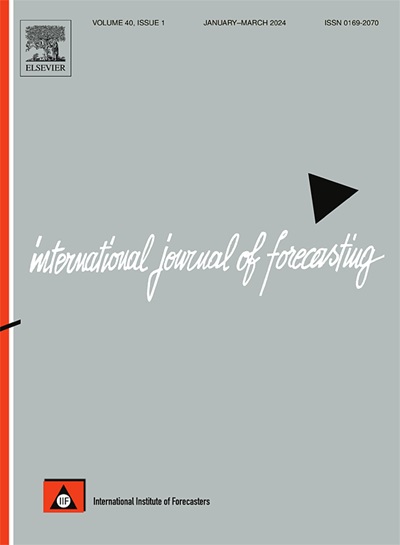对美国信用合作社破产进行建模和预测
IF 7.1
2区 经济学
Q1 ECONOMICS
引用次数: 0
摘要
本研究提出了一个基于随机森林(RF)的机器学习模型,以提前一年预测美国信用合作社的清算。当利用所有44个因素时,该模型在测试集上显示出令人印象深刻的准确性(97.9%的准确率,2.0%的假阴性和8.8%的假阳性)。将模型简化为基于特征重要性分析的前五个因素,测试集的准确率略低,但仍然显著(准确率为92.2%,假阴性为7.8%,假阳性为17.6%)。与其他7种分类方法的比较验证了射频模型的优越性。本研究还使用Cox比例风险模型和Shapley基于值的方法来解释关键特征的重要性和相互作用。该模型为监管机构和信用合作社提供了一个有价值的潜在失败预警系统,使纠正措施或战略合并能够最终保护国家信用合作社股份保险基金。本文章由计算机程序翻译,如有差异,请以英文原文为准。
Modeling and predicting failure in US credit unions
This study presents a random forest (RF)-based machine learning model to predict the liquidation of US credit unions one year in advance. The model demonstrates impressive accuracy on the test set (97.9% accuracy, with 2.0% false negatives and 8.8% false positives) when utilizing all 44 factors. Simplifying the model to only the top five factors based on feature importance analysis results in a slightly lower, but still significant, accuracy on the test set (92.2% accuracy, with 7.8% false negatives and 17.6% false positives). Comparisons with seven other classification methods verify the superiority of the RF model. This study also uses the Cox proportional-hazards model and Shapley value-based approaches to interpret key feature significance and interactions. The model provides regulators and credit unions with a valuable early warning system for potential failures, enabling corrective measures or strategic mergers to ultimately protect the National Credit Union Share Insurance Fund.
求助全文
通过发布文献求助,成功后即可免费获取论文全文。
去求助
来源期刊

International Journal of Forecasting
Multiple-
CiteScore
17.10
自引率
11.40%
发文量
189
审稿时长
77 days
期刊介绍:
The International Journal of Forecasting is a leading journal in its field that publishes high quality refereed papers. It aims to bridge the gap between theory and practice, making forecasting useful and relevant for decision and policy makers. The journal places strong emphasis on empirical studies, evaluation activities, implementation research, and improving the practice of forecasting. It welcomes various points of view and encourages debate to find solutions to field-related problems. The journal is the official publication of the International Institute of Forecasters (IIF) and is indexed in Sociological Abstracts, Journal of Economic Literature, Statistical Theory and Method Abstracts, INSPEC, Current Contents, UMI Data Courier, RePEc, Academic Journal Guide, CIS, IAOR, and Social Sciences Citation Index.
 求助内容:
求助内容: 应助结果提醒方式:
应助结果提醒方式:


